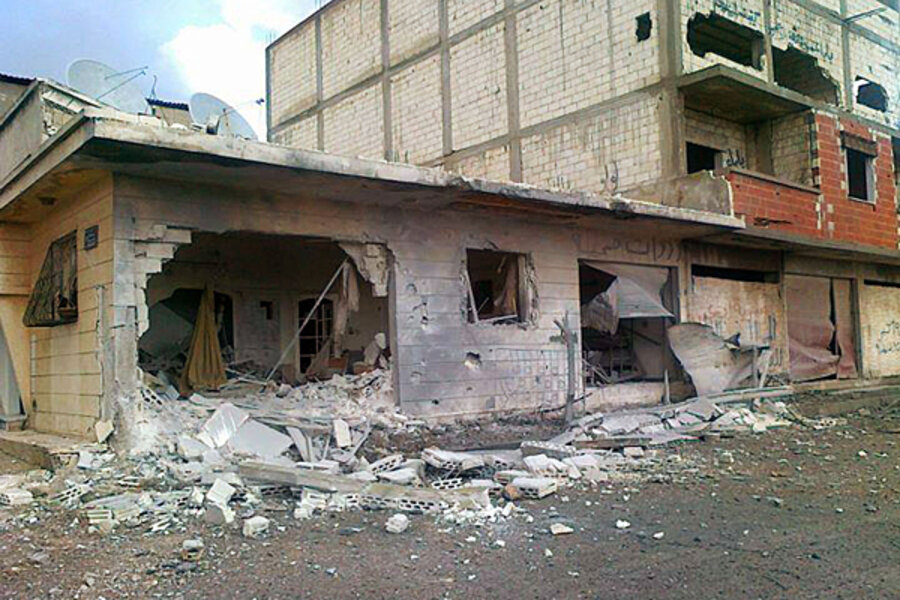Ominous signs in Homs amid reports that Syrian tanks are rolling in
Loading...
Homs, particularly the predominantly Sunni neighborhood of Baba Amr, has been pounded for weeks with artillery and mortars. Now, it appears that Syria's Bashar al-Assad is moving to phase two.
Reuters reports that an elite unit commanded by one of Assad's brothers is moving tanks into position in the city. While not yet independently confirmed, moving tanks and infantry in the "softening up" that's taken place with the hundreds killed in recent weeks was always on the cards. While not confirming the tank assault, the Syrian Observatory for Human Rights reports a pause in the shelling of Baba Amr for most of the day.
If it is happening, Homs' people are probably in store for more horrors. They have braved weeks of sniper fire and mortar attacks. Residents have been killed while out scavenging for food, infants and children have been killed by mortar strikes on their homes. Dealing with sniper fire on the streets has become the new normal (have a look at the video below, in which a blase Homsi jokes about his ruined city while a sniper takes cracks at cars and pedestrians hustling down the street).
Mr. Assad appears to determined to win the country's war much in the way his father Hafez won the last challenge to the Baath Party in 1982. After years of assassinations, low-level fighting and defections from the army (a captain in the Army organized the murder of dozens of cadets, most of them members of the Alawite minority the Assad's belong to, in Aleppo in 1979), the security services came to grips with their opponents, who'd coalesced into the Syrian Islamic Front, a Sunni-based Islamist insurgency.
With his opponents on the ropes, Hafez Assad delivered the coup de grace in the city of Hama, a stronghold of resistance much like Homs is today. He battered the city from the air for days, then unleashed tanks on its streets, firing shells into homes and accompanying infantrymen shooting everything that moved. Once the city was won, the elder Assad's security agents combed the city, rounding up and executing hundreds of suspected supporters of the uprising. Amnesty International estimated that at least 10,000 people were killed in the operation.
The savagery unleashed on Hama was punctuation mark on that failed uprising and stunned the rest of the country into acquiescence. Now, the younger Assad is facing a challenge even greater than the one his father 30 years ago, and the clock is ticking. International sanctions on his regime are mounting and there's growing talk of arming the rebels Free Syrian Army from outside. Assad must be particularly worried about the rich Sunni monarchies of the Gulf. Qatar played a major role in arming Muammar Qaddafi's opponents in Libya, and Saudi Arabia, which styles itself as a protector of the faithful, is probably not going to look on passively at the slaughter of Sunni's at the hands of an Alawite led regime for very long.
During the Iraq war, weapons and money flowed to Sunni insurgents in Anbar and Nineveh governorates from Syria, and this smuggling rat-lines can just as easily be reversed. Large Sunni tribal confederations extend from Saudi across Iraq and into Syria, providing the family and personal connections that would grease the flow of weapons to Syria's insurgents. Assad is even losing putative friends like Iraq's Shiite Prime Minister Nouri al-Maliki, who is now calling for "change" and "free elections," in his neighbor, according to a Saudi newspaper.
So if Assad is looking for a barbaric coda for his war, much as his father found his in Hama, crushing Homs, and doing it soon, would probably be on the agenda.







